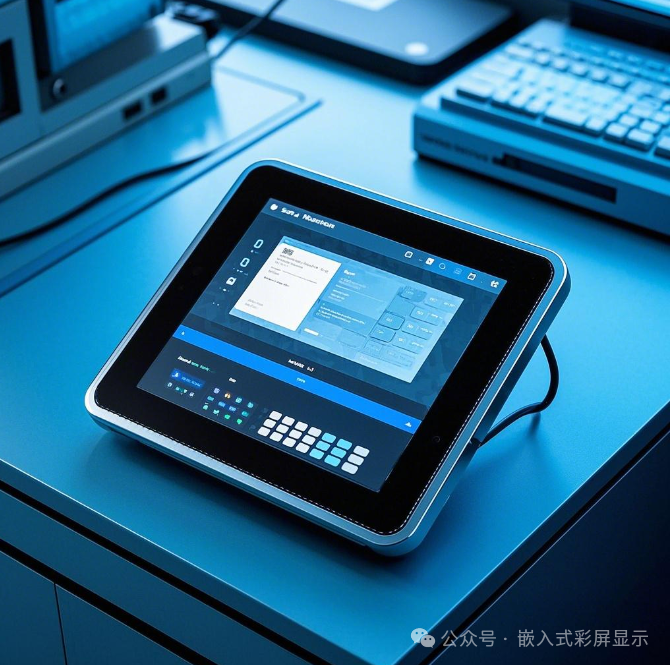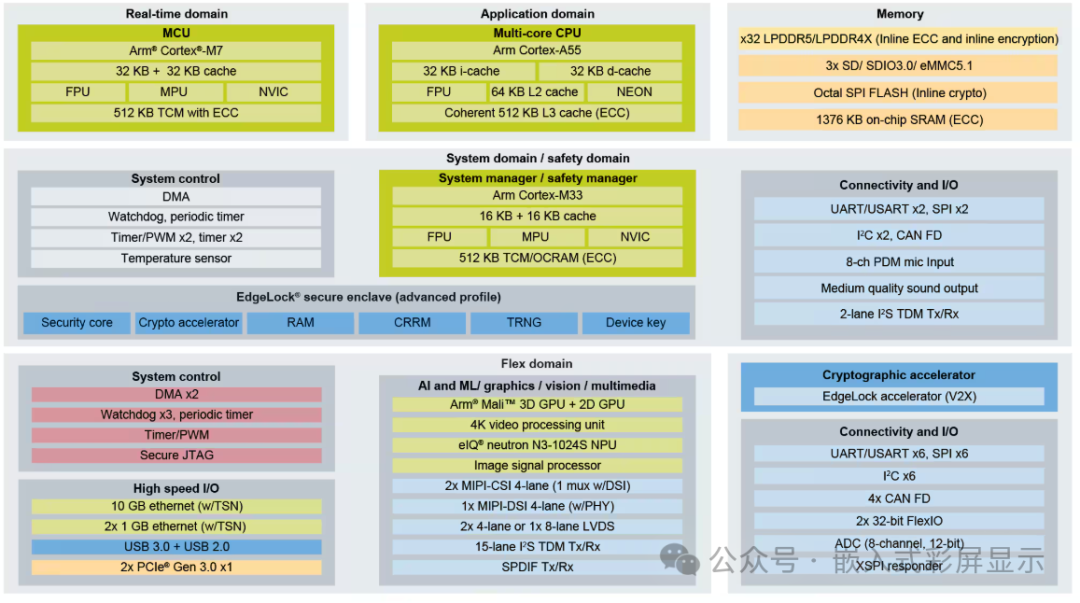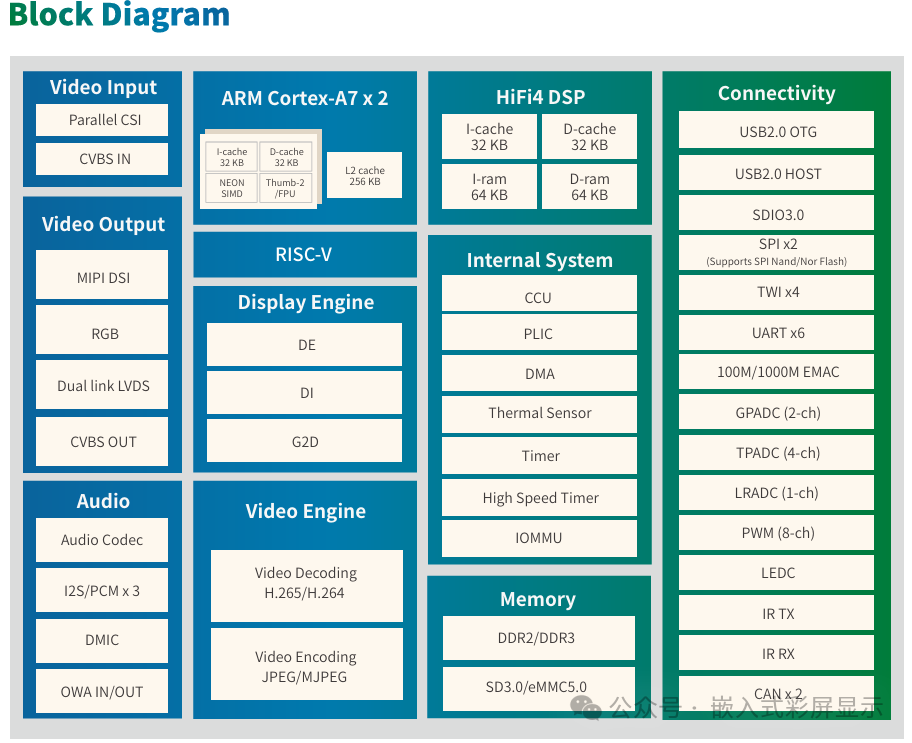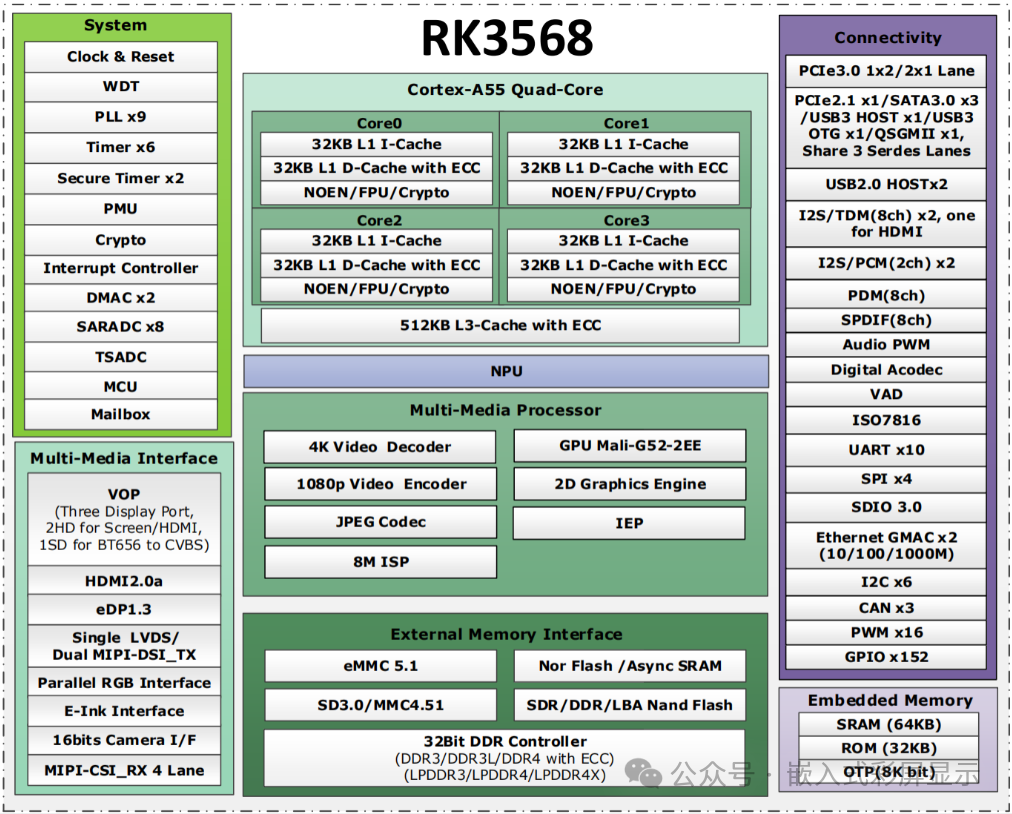Introduction
In embedded systems, the application scenarios for TFT LCD screens are becoming increasingly diverse, ranging from industrial control to consumer electronics, smart homes, and automotive electronics. TFT LCD screens have become a core component of human-machine interaction. As the “brain” driving the TFT LCD screens, the performance, power consumption, cost, and ecosystem support of embedded processors directly affect the performance of the final product.
This article will delve into how to choose the appropriate embedded processor SoC for TFT LCD screens (Note that this discussion focuses only on high-end SoC-level processors. Due to the varying sizes of TFT screens, low-cost products often use MCUs as the main chip. We will dedicate another article to discuss MCUs), covering mainstream chip models, domestic low-end chips, graphics processing capabilities, operating system support, and more. Through project cases, we aim to help developers better understand how to make choices in actual projects.

1. Core Indicators of Embedded Processors
When selecting an embedded processor, it is essential to focus on the following core indicators based on the application scenario and performance requirements of the TFT LCD screen:
Resolution and Refresh Rate: High resolution and refresh rates require stronger processing capabilities and higher memory bandwidth.
Graphics Processing Requirements: Whether support for 2D/3D graphics rendering, animation effects, or video playback is needed.
Power Consumption and Cost: Embedded systems are typically sensitive to power consumption and cost, necessitating a balance between performance and power consumption.
Real-time Requirements: Scenarios such as industrial control and medical devices have high real-time requirements.
Ecosystem Support: The level of support for graphics libraries, operating systems, and development tools directly impacts development efficiency.
2. Mainstream Embedded Processor Models
2.1 International Brands
NXP i.MX Series Models: i.MX 6, i.MX 8, i.MX 9
Architecture: ARM Cortex-A9/A53/A55/A72
Features: As a well-established manufacturer of industrial and automotive processors, NXP’s i.MX product line follows a general-purpose SoC route, supporting multi-core processing with clock speeds up to 1.2GHz~1.8GHz, built-in Vivante GPU, and support for graphics APIs such as OpenGL ES and OpenCL. The biggest advantage is its comprehensive software support, utilizing the Yocto Build system, and supporting various Linux distributions, Android systems, FreeRTOS, Zephyr RTOS, QNX, etc. The graphics processing capability of the i.MX series is stable and mature with built-in GPU driver code.
Applicable Scenarios: Widely used in automotive dashboards, industrial control panels, and other mid-to-high-end applications.

TI Sitara Series Models: AM335x, AM437x
Architecture: ARM Cortex-A8/A9
Features: Also a long-established industrial processor manufacturer, TI’s Sitara can be traced back over a decade. Its clock speeds typically range from 600MHz to 1GHz, with a built-in PowerVR GPU supporting OpenGL ES 2.0. Software support includes the Yocto Build system, with a solid technical foundation from a long-standing manufacturer.
Applicable Scenarios: Industrial control, medical devices, and other applications with high real-time requirements.
ST STM32MP Series Models: STM32MP1, STM32MP2
Architecture: ARM Cortex-A7/A35
Features: ST has not been in the embedded SoC market for long; the STM32MP series has chosen lower-end A7 and A35 cores, with clock speeds typically between 600MHz and 1GHz, and built-in graphics accelerators, suitable for low-power, low-cost applications.
Applicable Scenarios: Small TFT LCD screens, such as smart home control panels and portable devices.
Renesas SoC Models: RZ/A Series, RZ/G Series
Architecture: ARM Cortex-A9/A55
Features: The RZ/A series has large-capacity RAM (up to 10MB) and supports high-resolution displays, suitable for industrial control and HMI applications. The RZ/G series supports multi-core processing and has a built-in PowerVR GPU, suitable for high-performance graphics applications.
Applicable Scenarios: Industrial control, automotive electronics, high-end consumer electronics.
2.2 Domestic Brands
Allwinner
Models: T113, A40i, T507, T527, A133, R818, H618, etc.
Architecture: ARM Cortex-A7/A53/A55/A72/A76
Features: In the entire industry, if we talk about the richness of chip model names, Allwinner would be second to none. Many of Allwinner’s products are based on the same die, controlled through fuses and SDKs to target different markets with the same chip die. This is also the core reason for their dizzying array of model types. However, it also indicates Allwinner’s deep understanding of specific markets. The clock speeds of Allwinner SoCs typically range from 600MHz to 2.0GHz, with built-in Mali GPUs supporting OpenGL ES 2.0, and low cost. They cover various fields including industrial, consumer, and automotive applications.
Applicable Scenarios: Smart homes, educational devices, portable display devices, industrial, automotive, etc.

RockChip
Models: RK3568, RK3399, RK3588, RK3576
Architecture: ARM Cortex-A35/A72/A76
Features: As the strongest general-purpose SoC manufacturer in China, RockChip’s stock price is rapidly rising, firmly holding the position of the leading domestic SoC manufacturer. Due to the high performance of its products and built-in NPU, many AI-related applications are possible. Clock speeds reach up to 1.5GHz~2.0GHz, with built-in Mali GPUs supporting OpenGL ES 3.1 and Vulkan, offering strong performance. Notably, the RK3588 can already run DeepSeek’s distilled model, and it is rumored that the next generation RK3688 is already in development, with high expectations for the next generation products to run larger models of DeepSeek, promoting the deployment of large AI models on the edge.
Applicable Scenarios: Mid-to-high-end consumer electronics, advertising machines, smart terminals.

SigmaStar
Models: SSD20x/SSD21X
Architecture: ARM Cortex-A7
Features: Clock speeds typically range from 1.0GHz to 1.2GHz, with built-in GPUs supporting OpenGL ES 2.0, low power consumption, suitable for low-cost applications. The chip offers high cost-performance in display applications, integrating DDR storage of up to 128MB, primarily running Linux.
Applicable Scenarios: Smartwatches, portable devices, low-power display terminals.
Ingenic
Models: SSD2XX
Architecture: MIPS/XBurst
Features: Clock speeds typically range from 1.0GHz to 1.2GHz, with built-in GPUs supporting OpenGL ES 2.0, low power consumption, suitable for low-cost applications.
Applicable Scenarios: Smartwatches, portable devices, low-power display terminals.
3. Graphics Processing Capabilities
The GPU is a core component driving TFT LCD screens, responsible for graphics rendering and acceleration. Here are some common embedded GPUs and their features:
Vivante GPU: Commonly used in NXP i.MX series processors, supporting OpenGL ES 2.0/3.0, suitable for mid-to-high-end graphics applications.
PowerVR GPU: Commonly used in TI Sitara series processors, supporting OpenGL ES 2.0, suitable for mid-range graphics applications.
Mali GPU: Widely used in ARM architecture processors, such as Mali-T860 and Mali-G71, supporting OpenGL ES 3.1 and Vulkan, suitable for high-performance graphics applications.
VideoCore GPU: Used in Raspberry Pi series, supporting OpenGL ES 2.0/3.1, suitable for multimedia and gaming applications.
4. Selection of Graphics Libraries
Graphics libraries are essential tools for developing TFT LCD screen applications, directly affecting development efficiency and graphics performance. Here are some common graphics libraries:
OpenGL ES: The most commonly used graphics API in embedded systems, supporting 2D and 3D graphics rendering, suitable for high-performance graphics applications.
Vulkan: A next-generation graphics API that provides higher graphics performance and lower CPU overhead, suitable for high-end graphics applications.
Qt: A cross-platform C++ graphics library that supports rich UI components and animation effects, suitable for developing complex graphical interfaces.
LVGL: A lightweight open-source graphics library suitable for resource-constrained embedded systems, supporting touch screens and various display drivers.
AWTK: A graphics library designed for embedded systems, supporting various display controllers, suitable for low-resource environments.
5. Selection of Operating Systems
The operating system provides the runtime environment and resource management for TFT LCD screen applications. Here are some common embedded operating systems running on SoCs:
Android: A mobile operating system based on the Linux kernel, suitable for consumer electronics and multimedia applications, supporting rich graphics and touch functionalities.
Linux: Such as Ubuntu, Debian, supporting multitasking and multi-user, suitable for complex graphics applications and network functionalities.
QNX: A real-time operating system suitable for embedded applications with high real-time requirements, with low resource usage and fast boot speed.
Zephyr: An open-source real-time operating system suitable for low-power, resource-constrained embedded systems, supporting various processor architectures.
RT-Thread: A domestic real-time operating system with a rich ecosystem, suitable for mid-to-low-end embedded applications.
6. Application Cases
6.1 Smart Home Control Panel Project Background: A smart home company plans to develop a smart home control panel that supports voice control and touch operation, requiring a 4-inch, 480×480 resolution MIPI interface TFT LCD capacitive screen.
Processor: Allwinner T113-S3
Graphics: QT 5
Operating System: Tina Linux (Allwinner’s customized Linux version)
Features: Low cost, low power consumption, supports touch operation and voice control, suitable for smart home scenarios. The Linux system can provide rich middleware for application development, and the overall cost is lower than that of the Android system, with high running efficiency achieved using the QT library for the UI. The development difficulty of Linux embedded systems is relatively high.
6.2 Industrial Control Panel Project Background: An industrial equipment manufacturer needs to develop an industrial control panel for monitoring and controlling production lines, requiring smooth operation, support for a web-like beautiful UI, and a 10.1-inch TFT LCD touch screen with a resolution of 1024×600.
Processor: RockChip RK3568
Graphics Library: OpenGL ES
Operating System: Android 11/Android 12
Features: The UI of the Android system is very beautiful, allowing for rapid APP development using the Android software framework, while also supporting stable operation in industrial environments.
6.3 In-Vehicle Entertainment System Project Background: An automotive manufacturer plans to develop an in-vehicle entertainment system that needs to drive a 10.1-inch, 1280×800 resolution TFT LCD screen, supporting multimedia playback and navigation functions.
Processor: NXP i.MX 8Q
Graphics Library: Qt
Operating System: QNX
Features: Automotive-grade chip, supports very strong real-time capabilities, fast boot speed, high performance, and supports complex graphical interfaces and multimedia functions, suitable for automotive applications.
7. Conclusion
Choosing the right embedded processor for TFT LCD screens requires a comprehensive consideration of processor models, performance, GPU, graphics libraries, and operating systems. Whether it is an international brand or a domestic chip, each has its applicable scenarios and advantages. Through the case analyses and technical discussions in this article, we hope to provide valuable references for your embedded system design.
How to Follow Us?
If you are interested in the combination of TFT LCD screens and embedded systems, feel free to follow our public account! We will continue to share more technical insights, practical cases, and industry trends to help you go further on the path of product innovation definition and development.
Public Account Name:
Embedded Color Screen Display
How to Follow: Scan the QR code below or search for “Embedded Color Screen Display” to follow us.
